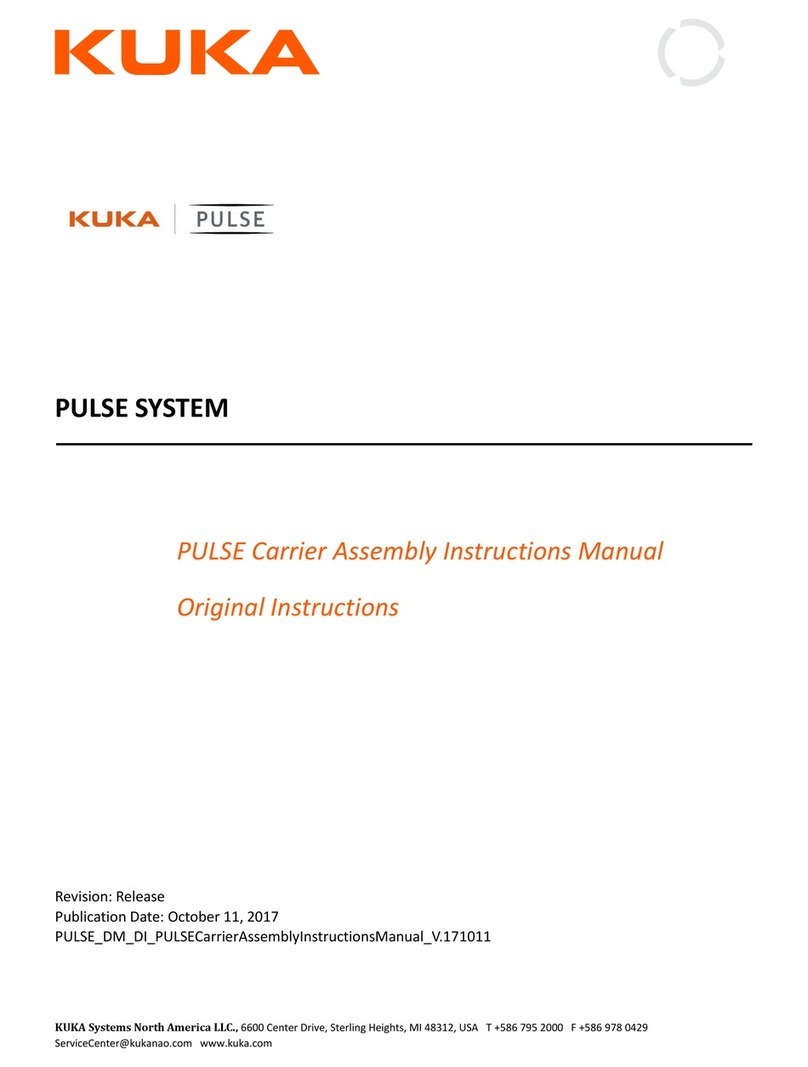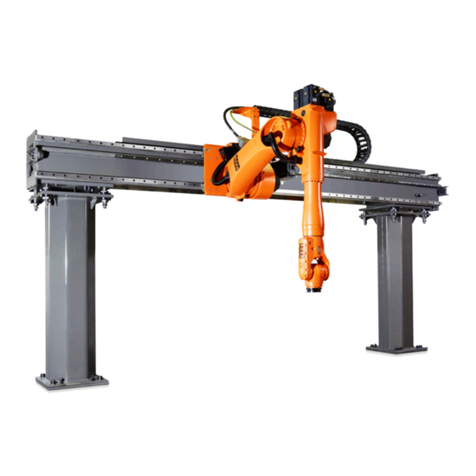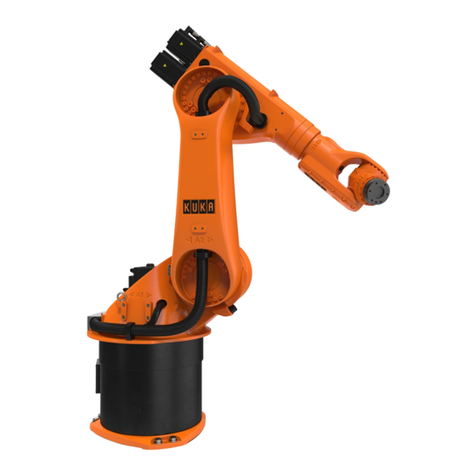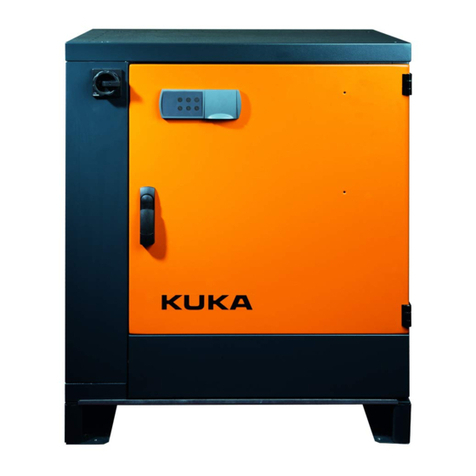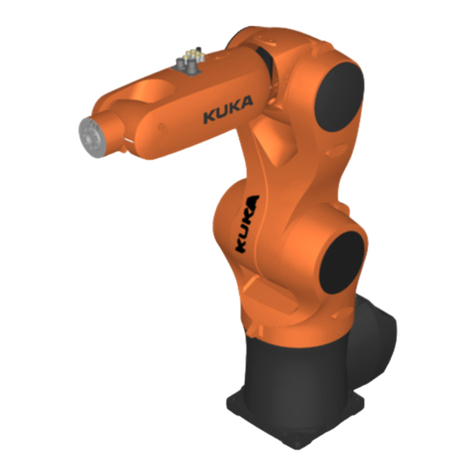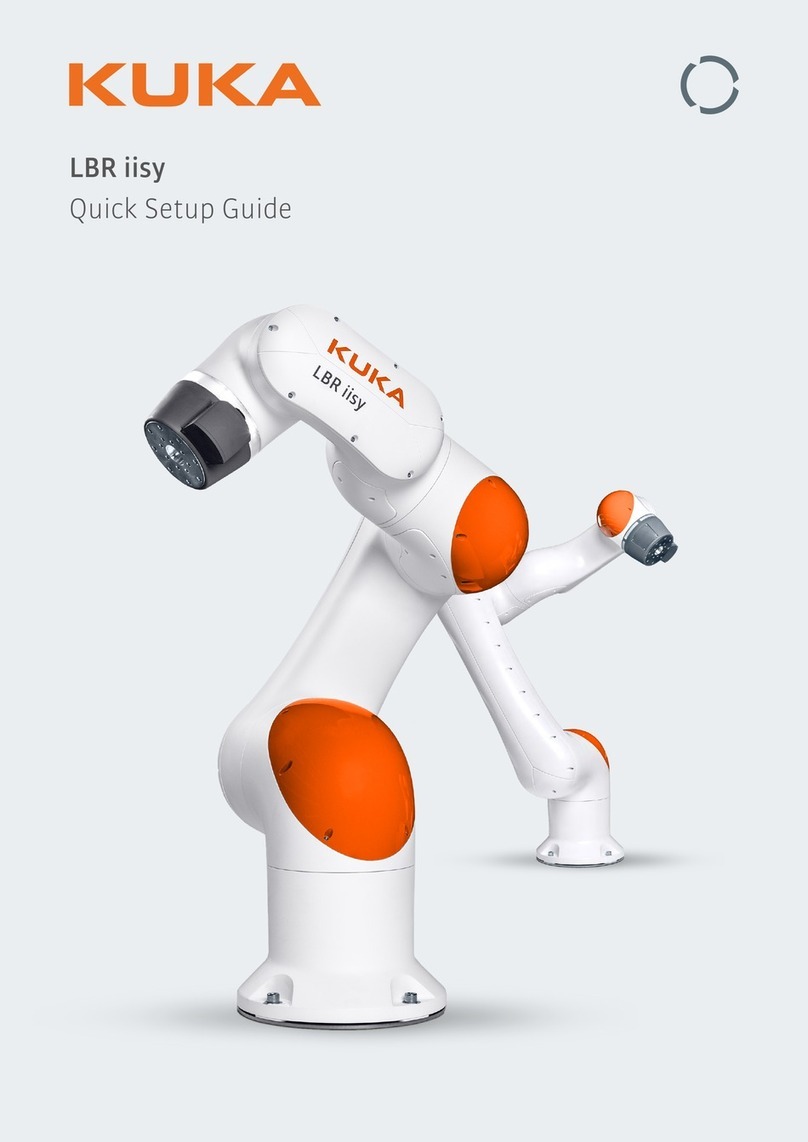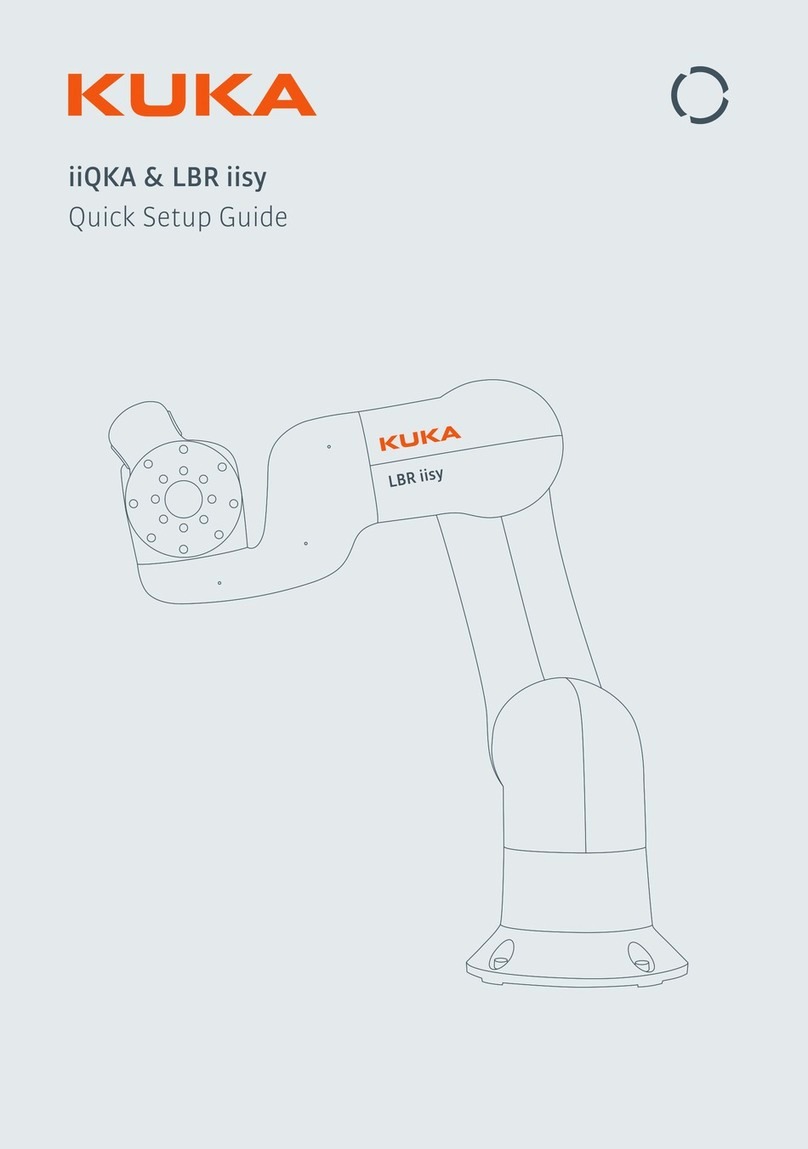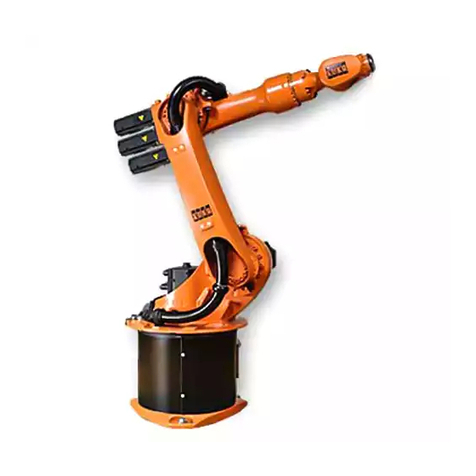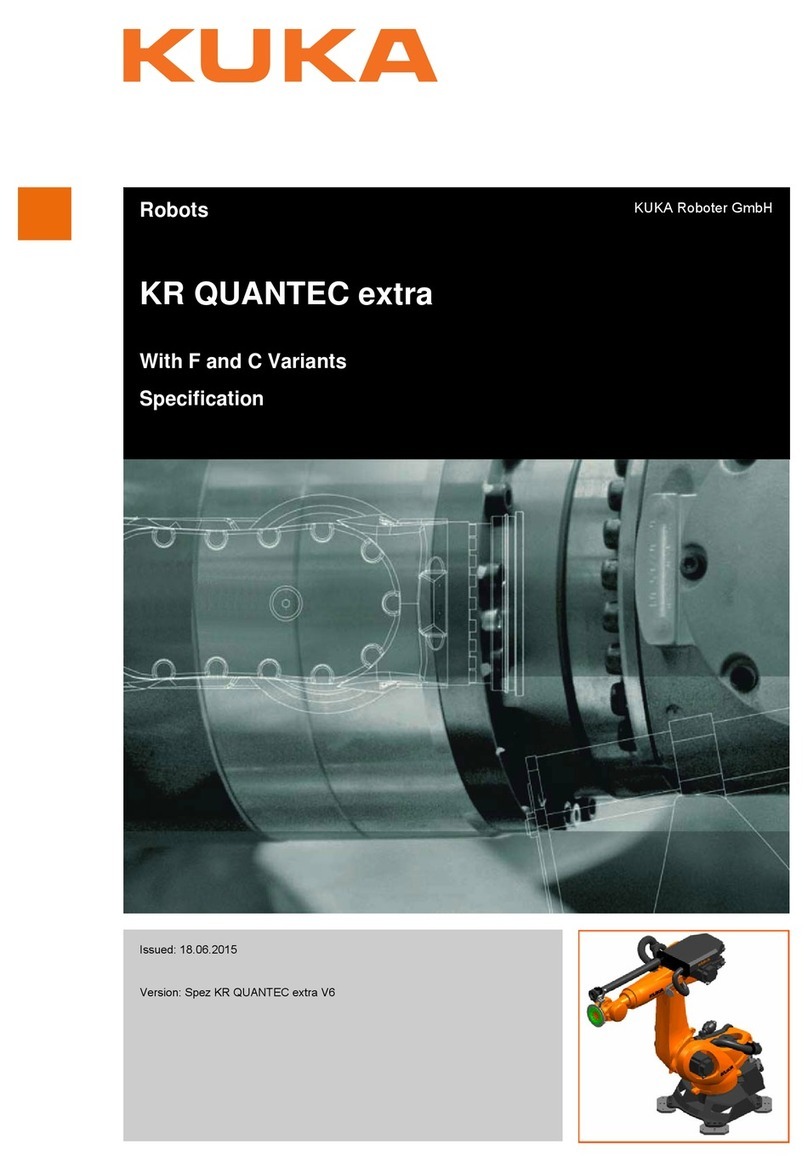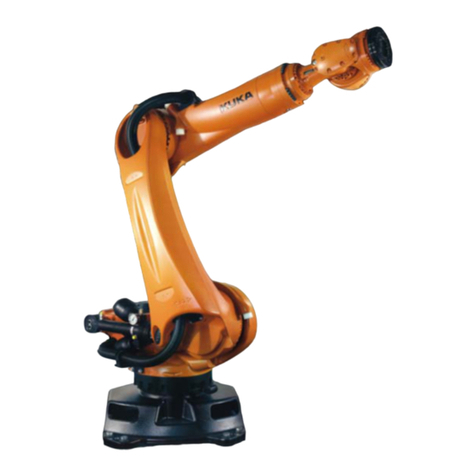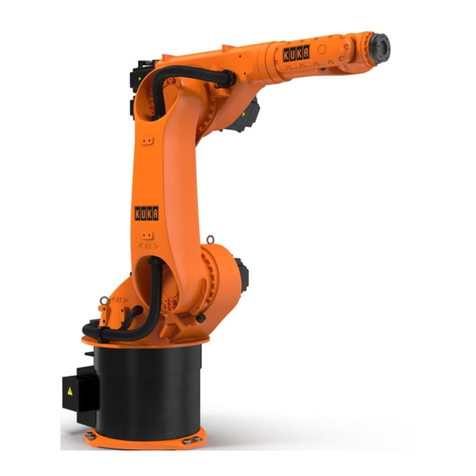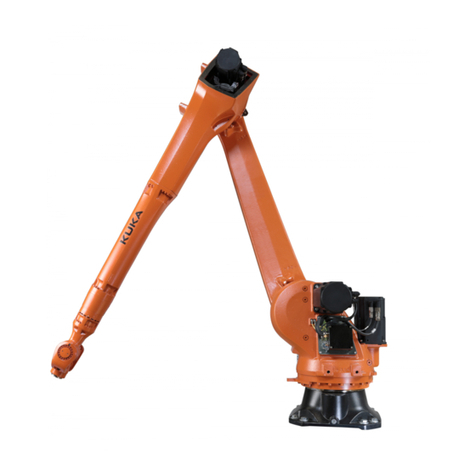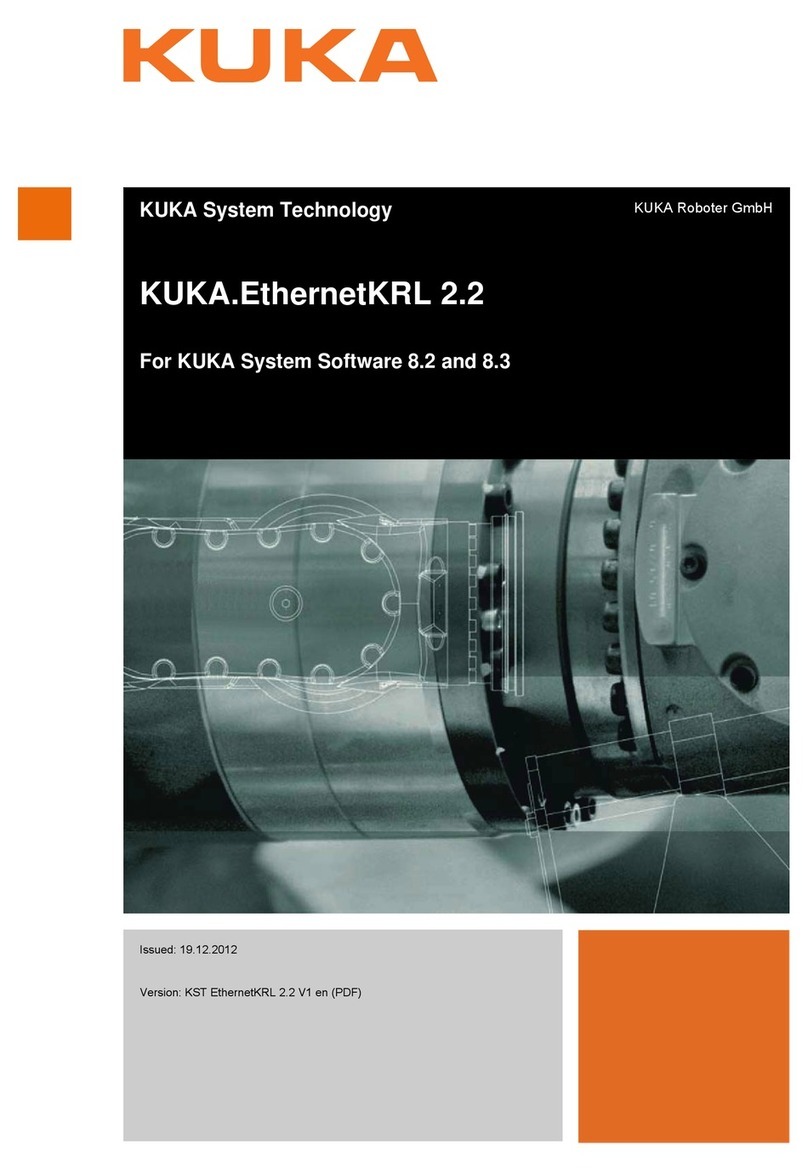3 / 125Issued: 16.03.2016 Version: MA KR 300 470-2 PA V5
Contents
1 Introduction .................................................................................................. 5
1.1 Industrial robot documentation ................................................................................... 5
1.2 Representation of warnings and notes ...................................................................... 5
2 Purpose ........................................................................................................ 7
2.1 Target group .............................................................................................................. 7
2.2 Intended use .............................................................................................................. 7
3 Product description ..................................................................................... 9
3.1 Overview of the robot system .................................................................................... 9
3.2 Description of the robot .............................................................................................. 9
4 Technical data .............................................................................................. 13
4.1 Basic data ..................................................................................................................13
4.2 Axis data .................................................................................................................... 14
4.3 Payloads ....................................................................................................................16
4.4 Mounting base data ................................................................................................... 20
4.5 Transport dimensions ................................................................................................ 21
4.6 Plates and labels ........................................................................................................ 22
4.7 Stopping distances and times .................................................................................... 25
4.7.1 General information .............................................................................................. 25
4.7.2 Terms used ........................................................................................................... 26
4.7.3 Stopping distance and stopping times for KR 300 PA .......................................... 27
4.7.3.1 Stopping distances and stopping times for STOP 0, axis 1 to axis 3 .............. 27
4.7.3.2 Stopping distances and stopping times for STOP 1, axis 1 ............................. 28
4.7.3.3 Stopping distances and stopping times for STOP 1, axis 2 ............................. 30
4.7.3.4 Stopping distances and stopping times for STOP 1, axis 3 ............................. 32
4.7.4 Stopping distance and stopping times for KR 470 PA .......................................... 32
4.7.4.1 Stopping distances and stopping times for STOP 0, axis 1 to axis 3 .............. 32
4.7.4.2 Stopping distances and stopping times for STOP 1, axis 1 ............................. 33
4.7.4.3 Stopping distances and stopping times for STOP 1, axis 3 ............................. 35
4.7.4.4 Stopping distances and stopping times for STOP 1, axis 2 ............................. 36
5 Safety ............................................................................................................ 39
5.1 General ...................................................................................................................... 39
5.1.1 Liability .................................................................................................................. 39
5.1.2 Intended use of the industrial robot ...................................................................... 40
5.1.3 EC declaration of conformity and declaration of incorporation ............................. 40
5.1.4 Terms used ........................................................................................................... 41
5.2 Personnel ...................................................................................................................41
5.3 Workspace, safety zone and danger zone ................................................................. 42
5.4 Overview of protective equipment .............................................................................. 43
5.4.1 Mechanical end stops ........................................................................................... 43
5.4.2 Mechanical axis range limitation (optional) ........................................................... 43
5.4.3 Axis range monitoring (optional) ........................................................................... 43
5.4.4 Options for moving the manipulator without drive energy ..................................... 44
5.4.5 Labeling on the industrial robot ............................................................................. 44
5.5 Safety measures ........................................................................................................ 45
Contents
